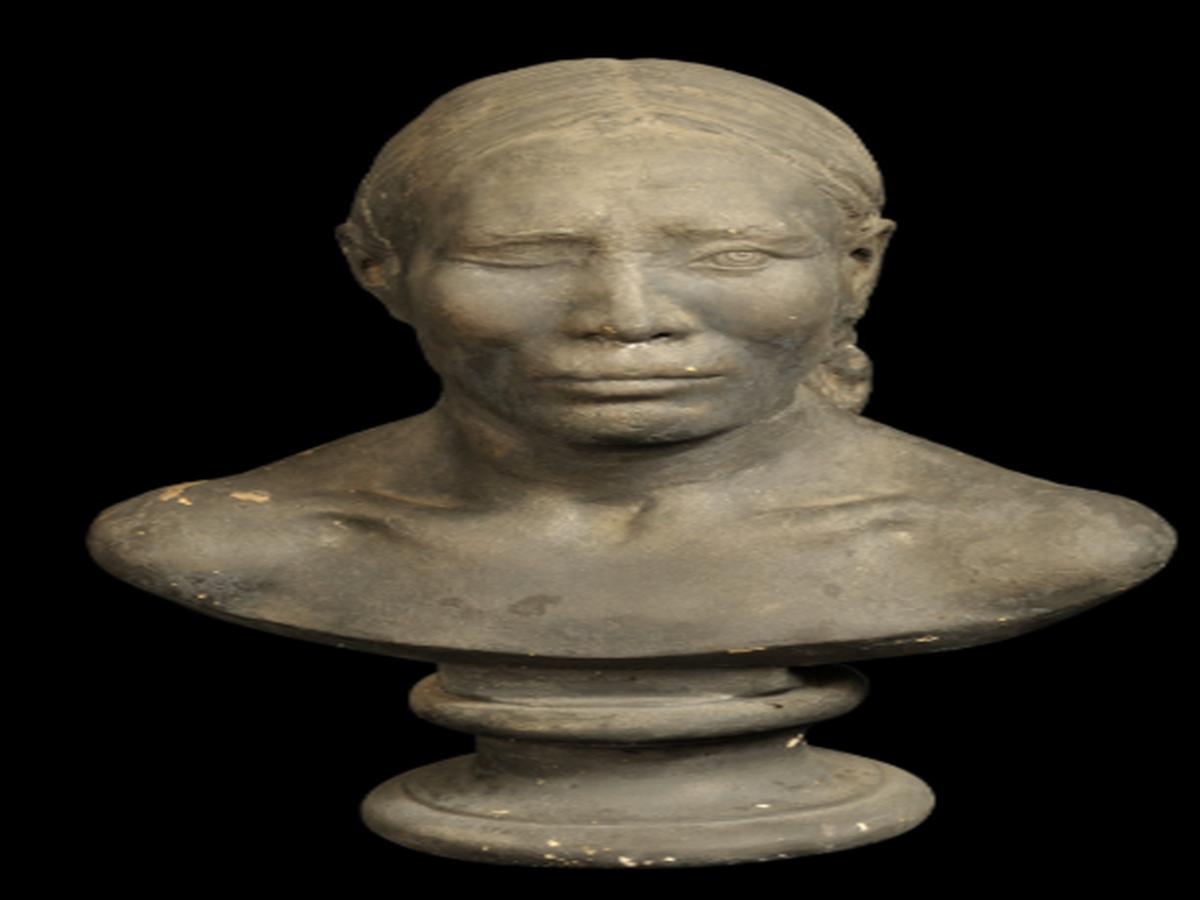State
Tribe Name
Art Type
short description
The plaster sculpture portrays in bust form a woman of the Bhutia tribe, an important ethnic group of Sikkim. Of Tibetan origin, the Bhutias migrated to Sikkim in the 14th and 15th centuries and have since formed an integral part of the social and cultural fabric of the region. The bust is mounted on a circular pedestal, featuring some of the distinctive traits of Bhutia physiognomy. The woman is characterized by short hair, a nose with a slightly flat and broad profile, and an epicanthic fold — a trait commonly passed on genetically among people of Mongoloid descent. One interesting feature about the sculpture is that one eye is closed while the other remains open, suggesting either an expression caught in a moment or a symbolic artistic embellishment.
Thumbnail

Filter Postion
Left
Filter Background
Off
Theme
Filter Header Image

content
Image

description
The plaster sculpture portrays in bust form a woman of the Bhutia tribe, an important ethnic group of Sikkim. Of Tibetan origin, the Bhutias migrated to Sikkim in the 14th and 15th centuries and have since formed an integral part of the social and cultural fabric of the region. The bust is mounted on a circular pedestal, featuring some of the distinctive traits of Bhutia physiognomy. The woman is characterized by short hair, a nose with a slightly flat and broad profile, and an epicanthic fold — a trait commonly passed on genetically among people of Mongoloid descent. One interesting feature about the sculpture is that one eye is closed while the other remains open, suggesting either an expression caught in a moment or a symbolic artistic embellishment.
The Bhutias, who are predominantly Buddhists, have hugely contributed to the cultural landscape of Sikkim in terms of language, architecture, art, and festivals. While their traditional costumes like the Bakhu show a strong Tibetan influence interspersed with local traditions, festivals such as Losar (Tibetan New Year) illustrate their heritage. Such anthropological sculptures are as much about preserving the facial features as about preserving the cultural ambience surrounding the indigenous people. They stand as visual records that help generations to come appreciate the ethnic diversity and craftsmanship that form the backbone of tribal heritage in India.
The Bhutias, who are predominantly Buddhists, have hugely contributed to the cultural landscape of Sikkim in terms of language, architecture, art, and festivals. While their traditional costumes like the Bakhu show a strong Tibetan influence interspersed with local traditions, festivals such as Losar (Tibetan New Year) illustrate their heritage. Such anthropological sculptures are as much about preserving the facial features as about preserving the cultural ambience surrounding the indigenous people. They stand as visual records that help generations to come appreciate the ethnic diversity and craftsmanship that form the backbone of tribal heritage in India.
Image Mode
landscape
promoted
On
Verified
Off
